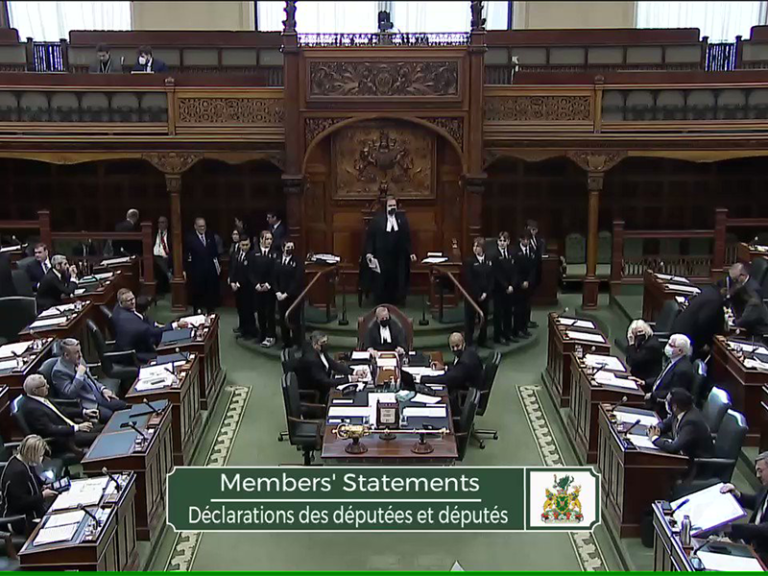First published: November 12, 2004
by Keith Oliver
Traditional patterns of development result in higher property taxes.
When we think of the cost of living in Cobourg, the first thing that comes
to mind is property taxes. Along with fees for various town services,
grants from higher levels of government, and loans to finance large capital
projects, property taxes make up 75% of the only revenues a municipal
government has to finance its operations and services. This includes roads,
safe water and sewer lines, library services, police and fire protection, etc.
One important issue Cobourg has yet to address is the provision of
affordable housing, the waiting list for which represents an ongoing
tragedy. While Northumberland County is responsible for such social
services, one quarter of Cobourg’s property taxes are dedicated to the
Northumberland County budget.
There is a commonly held belief that any kind of development will benefit
our town. The rationale is that the more development, the more short term
and long term jobs, the more property taxes collected, the lower the
property taxes paid.
There is just one problem with this over-simplified concept of our public
economy. Based on historical experience, traditional forms of development
cost more to service and maintain than the municipal revenues they
generate. In almost every single case, traditional development has resulted
in either higher property taxes or reduced services.
Cost/benefit analysis and the planning of Cobourg.
Once-upon-a-time the rate of growth of a town like Cobourg happen at such a
measured pace, and under such circumstances, that the evolving form of the
town made sense and everyone benefited. There was time enough for the ebb
and flow of the local free-market economy to redress any imbalances. The
advent of the private automobile and the large scale development project,
changed all that. Today a developer can assemble large tracts of land using
pre-construction bank financing, bring in specialized construction crews
from 500 miles away, build a shopping centre or a 500 unit housing
development, sell a 50% pre-sold project to a real estate trust, and be
gone within 12 to 18 months. In the case of a city of two million people,
any problems created can be tolerated and adjustments can be made. In the
case of a small town like Cobourg the results could be disastrous.
For these reasons Cobourg needs to think of itself as a business and its
residents as shareholders. It needs to evaluate, choose and plan the kind
of development it wants based on a cost-benefit analysis that will ensure
the highest return (quality-of-life), for all its shareholders (residents),
at the lowest affordable cost (annual property taxes).
If development is to benefit the community as a whole, the development plan
for Cobourg must be clear, carefully thought out, well illustrated, using
Master Plans and Guideline documents, in such a way that the pitfalls
associated with traditional development are avoided and any challenges by
developers will be defeated at the Ontario Municipal Board.
Well planned compact urban form is the key to lower property taxes.
A key component in achieving a more compact urban form is increasing both
residential and job densities. For residential land-use this means tripling
the present average number of dwellings per hectare (dph), from 12 dph to
36 dph. Previous articles have given at least 9 specific attractive and
successful examples of how others have accomplished this.
In these articles the statement has been made that through achieving a more
compact urban form and the more efficient use of land, significant savings
will be made to the municipality and ultimately the property tax payer and
renter, in the cost of the construction, maintenance and replacement of
municipal services.
Hundreds of studies support property tax saving through the more efficient
use of land.
“The Costs of Sprawl: the Environmental and Economic Costs of Alternative
Residential Development Patterns at the Urban Fringe”, April 1974, by the
Real Estate Research Corporation, for the US Department of Housing and
Urban Development. This highly detailed classic study of a community of
10,000 dwellings, examined the consequences of different density and
development patterns (contiguous vs non-contiguous growth) on the costs of
local municipal infrastructure.
“Infrastructure Costs Associated with Conventional and Alternative
Development Patterns”, March 1996, Canadian Mortgage and Housing
Corporation. In partnership with the Regional Municipality of
Ottawa-Carlton, an existing 810 acre conventional suburban development was
evaluated. Then a team of CMHC and RMOC architects and planners designed a
community according to present New-Urbanist principles which doubled the
residential density, created a series of individual neighbourhoods, each of
which had a central green and increased mix of uses. They then overlaid
that design onto the existing site and developed comparative evaluation of
municipal service costs.
“The Economics of Urban Form”, January 1996, prepared for a GTA Taskforce
by Dr Pamela Blais of Berridge Lewinberg Greenberg Dark Gabor Ltd, Toronto,
Ontario, (town planners for Cornell). Assesses the relative costs
associated with different urban forms in the context of the GTA. Deals with
both direct and indirect costs including roads, transit, sewer and water
systems, school and hospital buildings, congestion and environmental
impacts. Comments on who pays and who benefits and examines government
(taxpayer) subsidies to low-density fringe growth (sprawl). Includes an
excellent bibliography.
“The Costs of Sprawl – Revisited”, Robert Burchell, TCRP Report 39, The
Centre for Urban Policy Research, Rutgers University, published by The
Transportation Research Board of the National Research Council, Washington,
DC, 1998. One of the best single publications on sprawl and its negative
effects. Evaluates 500 studies and breaks down the general subject matter
into the five categories of (1) public/private costs, (2) transportation
and travel costs, (3) land/natural habitat costs, (4) quality of life, and
(5) social issues. Extensive bibliography … and finally:
“Using Residential Patterns and Transit to Decrease Auto Dependence and
Costs”, June 1994, by Dr John Holtzclaw, Natural Resources Defense Council,
funded by the California Home Energy Efficiency Rating System and adopted
by the state sponsored California Air Resources Board. The study involves
data from 28 communities of 20,000 or more population, in four metropolitan
areas and one rural county. The study found that when residential densities
double, and local shopping, better transit service and a more pedestrian
friendly environment is available, the number of vehicle-miles driven per
household decreases by 15-30%, regardless of the level of income.
All studies are available through Keith Oliver who can be reached at
377-0107 and who is also available to speak with groups of interested
individuals.
Note: Part 14


